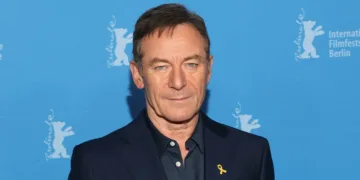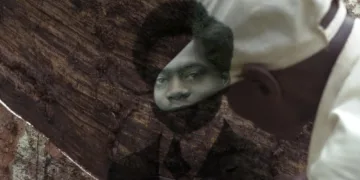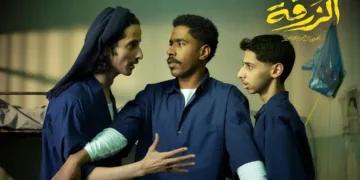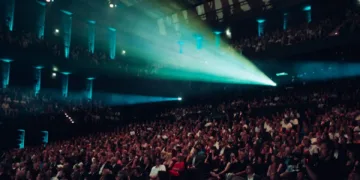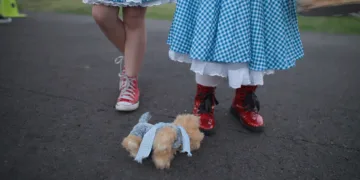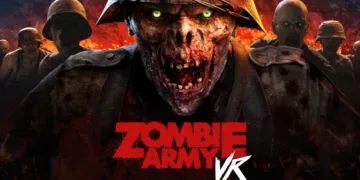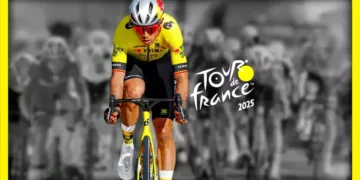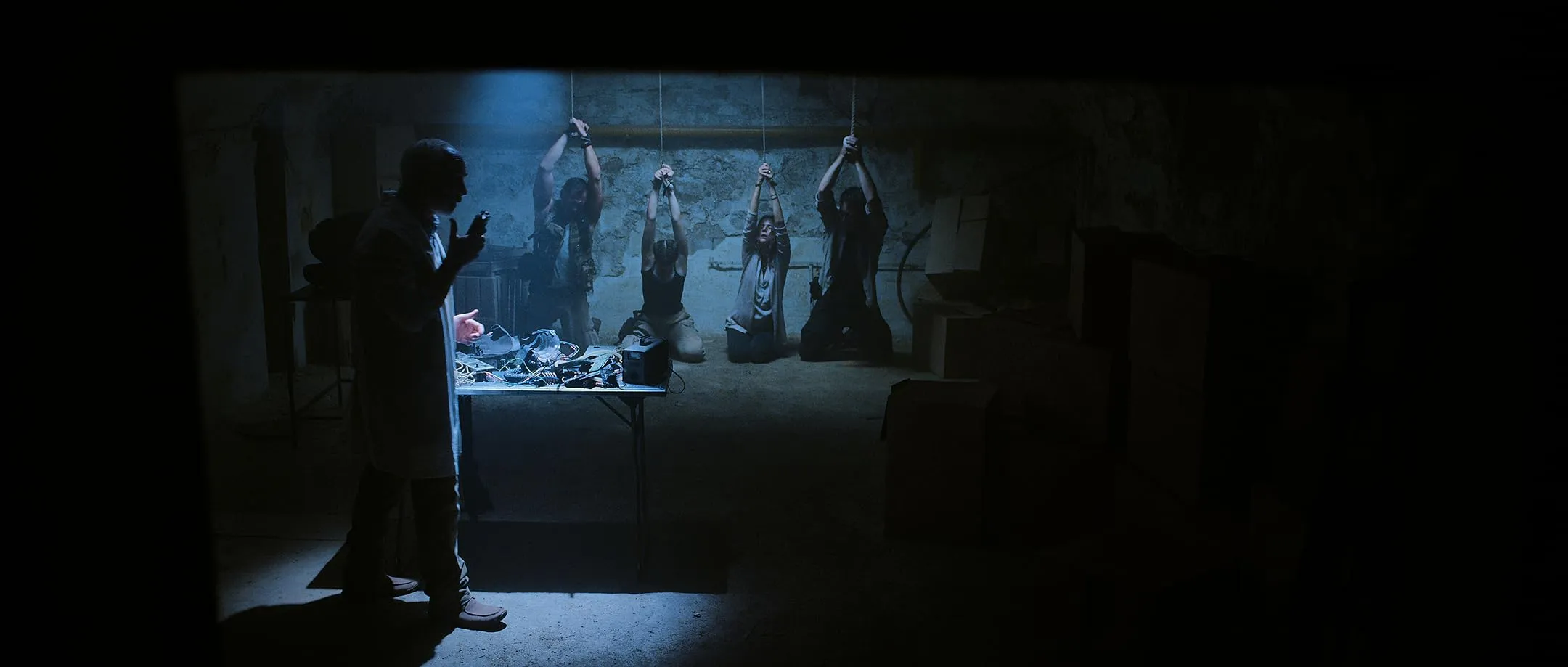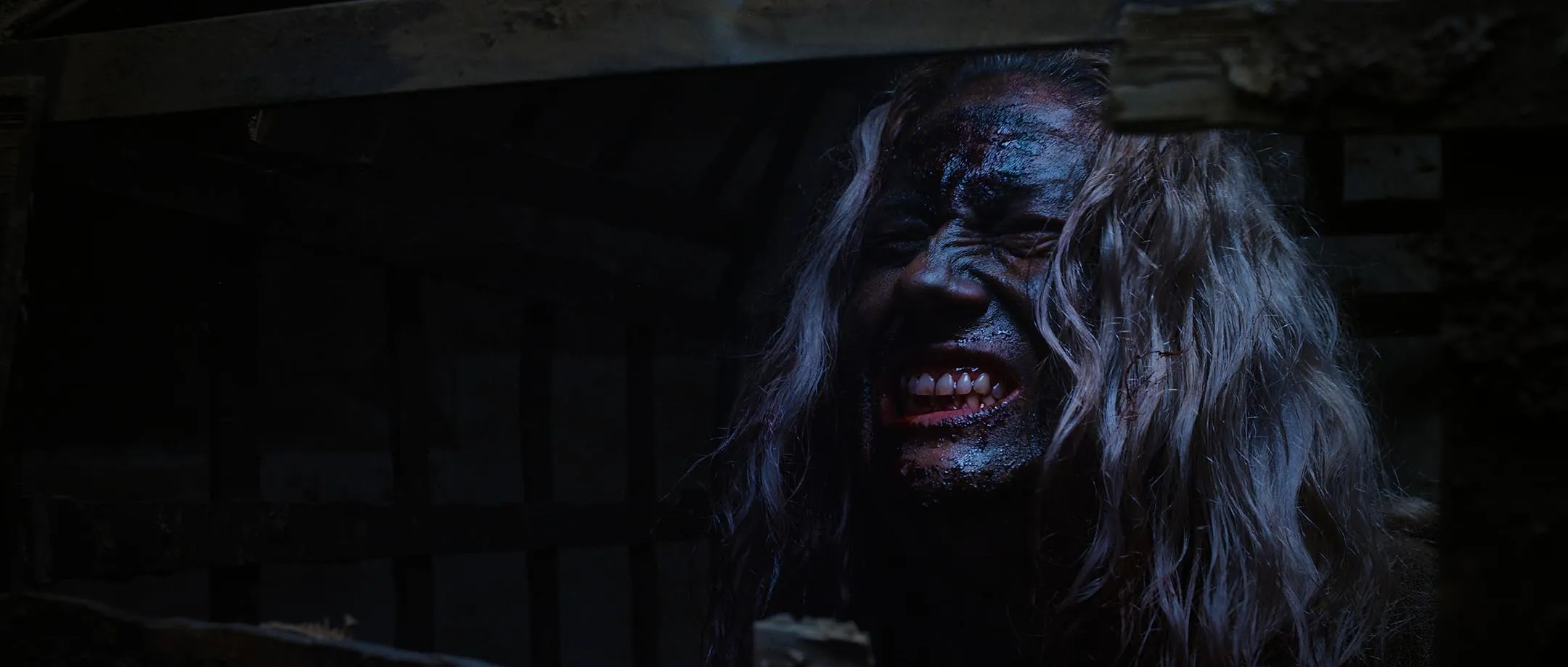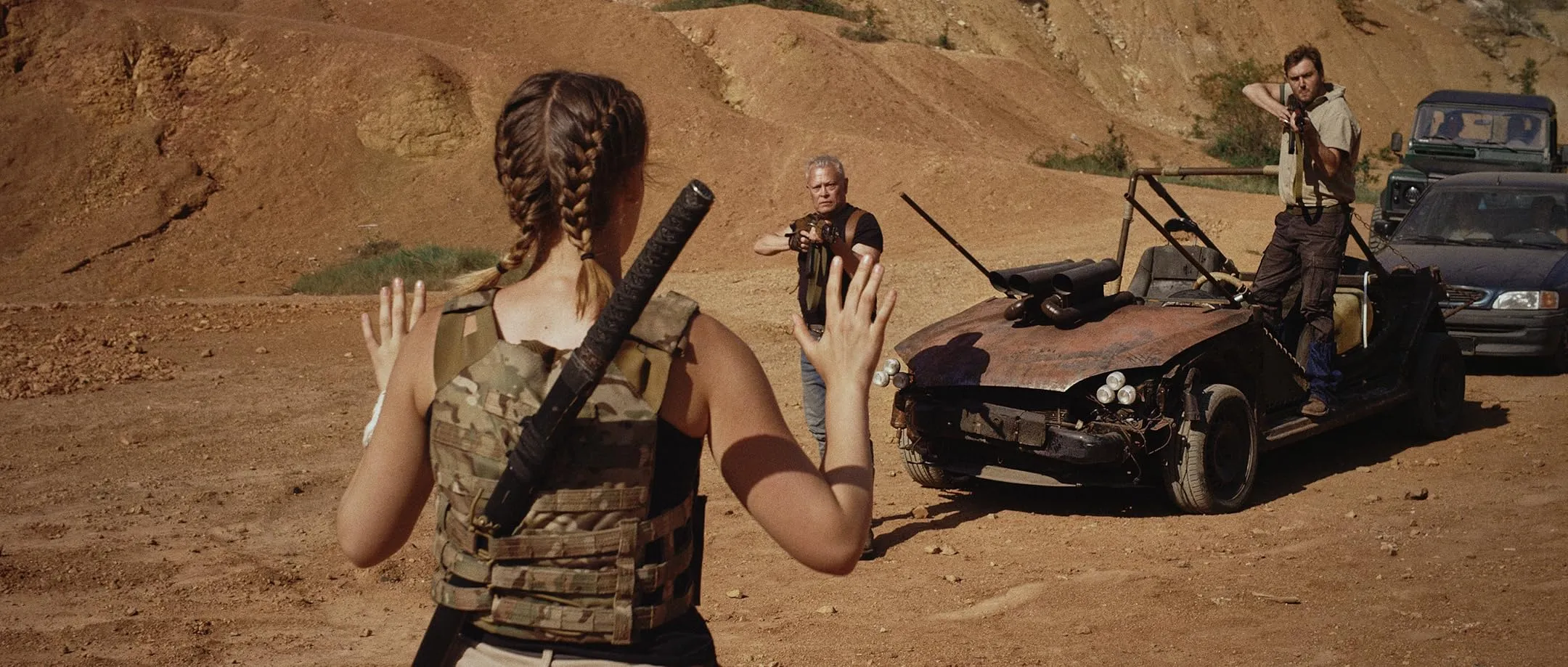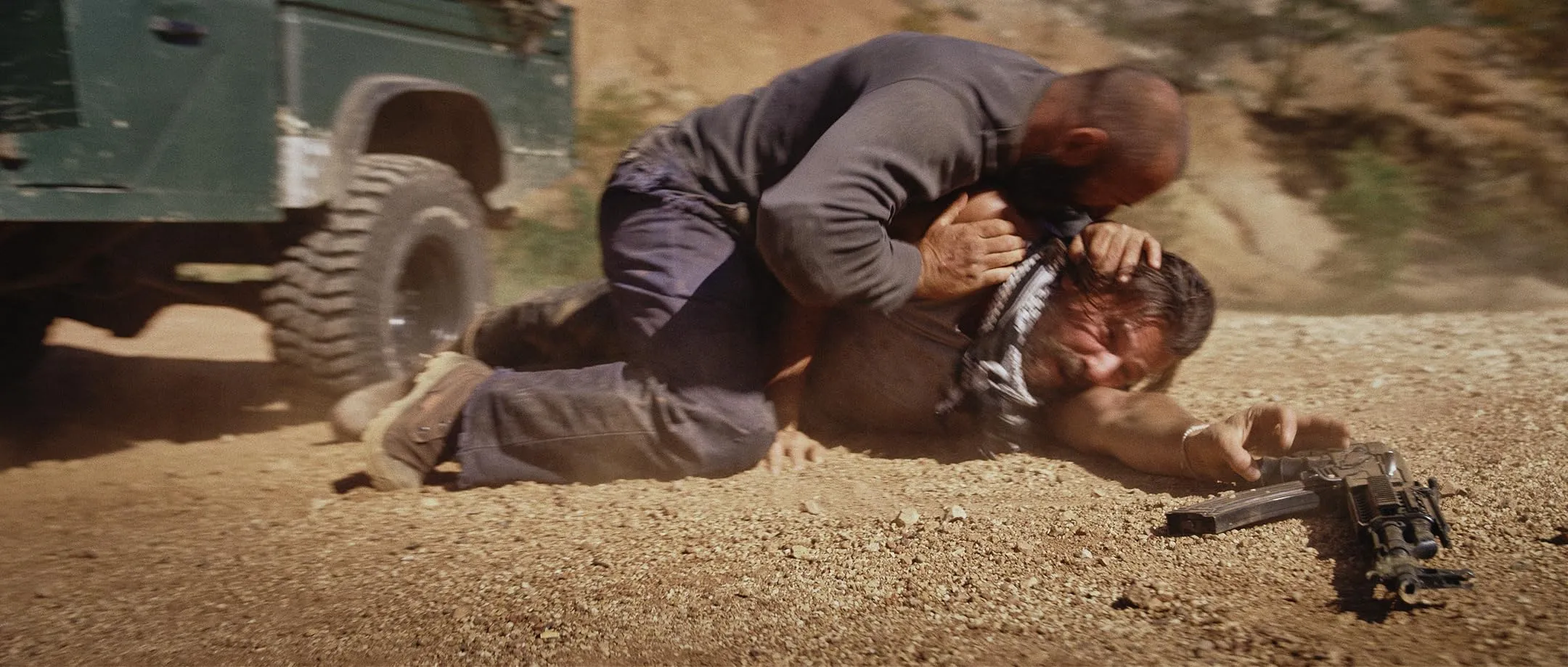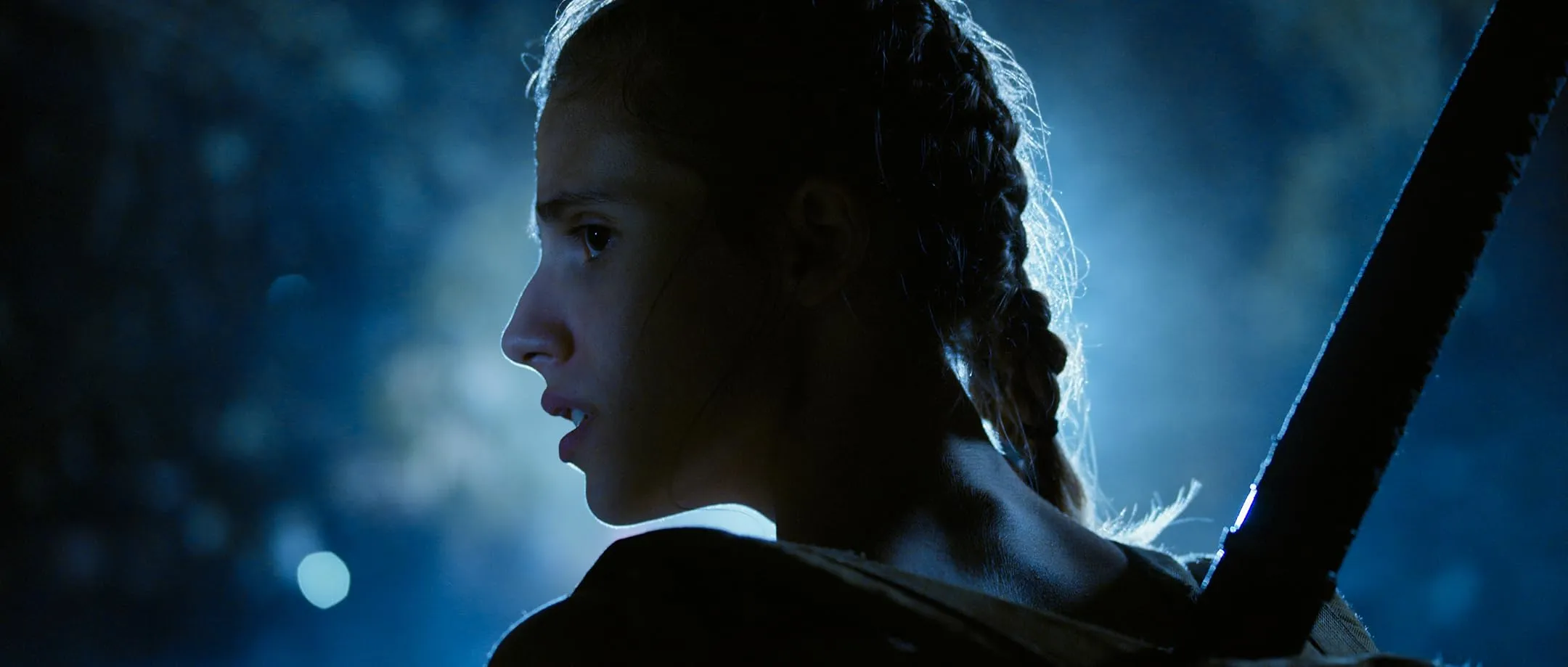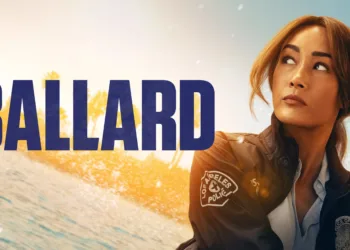Peter Deák’s 2025 film Silent Zone, drawn from Viktor Csák’s novel Welcome to the Silent Zone, presents a raw study of survival. Director Deák teams with cinematographer Sándor Tóth to frame rural Hungary and decaying Soviet‑style apartment blocks as landscapes of peril. Matt Devere stars as Cassius, a battle‑scarred protector, while Luca Papp embodies Abigail, the orphan he rescued amid an airport massacre.
The story ignites with a sudden outbreak at an international terminal: infected travelers surge through sterile halls, forcing Cassius to shoot Abigail’s reanimated mother and brother in a moment that forges their bond. A ten‑year leap follows, revealing the pair eking out existence in forest encampments, haunted by sprinting “ferals” whose snarls recall the monstrous metaphors in Indian parallel films.
Tóth’s lens captures empty streets lit by dawn’s chill, suggesting the uncanny stillness of Mumbai’s abandoned lanes during academic strikes. Editor István Horváth stitches together stark cuts—one shot lingers on a wind‑blown carousel in a ruined block—creating visual poetry that balances sudden violence. Composer Zoltán Kocsis underscores key scenes with sparse string passages, calling to mind the haunting minimalism of Satyajit Ray’s early scores.
At its core lies a tension between solitude and solidarity: Cassius drills Abigail under rusting silos, teaching her every tactic, as she clings to stories of “The Colony,” a floating refuge. This conflict echoes themes in contemporary Bollywood survival tales—films where community becomes the ultimate hope against collapse.
From Terminal Terror to Skies of Hope
The film opens with a sudden breach of security at an international airport, thrusting viewers into chaos. In this inciting moment, Abigail witnesses her mother and baby brother transform into feral attackers. Cassius steps in with controlled precision, delivering his first kill in one shot—an act that forges the bond at the story’s core.
A ten‑year leap follows, showing daily life in a woodland encampment. Scenes of dawn light filtering through makeshift tents alternate with close‑ups of water rationing and weapon maintenance. Training rituals unfold against silent trees: Cassius drills Abigail in hand‑to‑hand tactics and marksmanship, each repetition underscoring resource scarcity. These routines recall the discipline found in Bollywood survival dramas, where community cohesion emerges from shared hardship.
The call to action arrives when the pair rescue Megan, who carries new life, and her husband, David. Abigail presses Cassius to set aside isolation and head for “The Colony,” a mythic flotilla offering safety. Her plea mirrors the moral urgency seen in recent Indian films that examine duty versus self‑preservation.
En route, they face their first major clash with sprinting ferals. The camera adopts rapid pans and tight framing to convey panic, a stylistic choice reminiscent of Mumbai action sequences that emphasize human vulnerability in crowded spaces. Soon after, a scientist’s hidden lab introduces an ethical dilemma: should the infected be studied or simply dispatched? This subplot echoes debates in global cinema about the value of knowledge when survival is at stake.
Their trek leads to derelict apartment blocks, where horse‑drawn carts become surprising tools of escape. Here, the contrast between old‑world transport and modern desperation underlines how culture and crisis collide.
The high‑stakes flight sequence demands a risky fix of the film’s propeller plane. Under a blood‑red sunset, Cassius and Abigail scramble to board before a herd bears down. The editing tightens breath by breath, evoking aerial stunts in pan‑Asian thrillers.
All roads lead to the final assault on The Colony’s barricades. In that crucible, Cassius and Abigail prove that their shared ordeal has welded them into an unbreakable pair, ready to face whatever awaits beyond the shoreline.
Faces of Survival
Peter Deák frames Cassius as a figure drawn from the archetypes of parallel cinema’s lone warriors. His military roots emerge in every measured movement, from tightening rifle slings to silent patrols through hollow corridors. Guilt shadows his gaze—each shot fired echoes the loss he carries. During a rare moment of stillness, he confesses, “I don’t have the space for all the faces in my brain,” a line that underscores the burden of memory and reflects themes explored in regional war dramas, where stoic heroes reveal inner vulnerability only in whispered confession.
Abigail’s arc traces a path familiar to Bollywood coming‑of‑age tales, transformed by trauma into a resilient fighter. As a child, she grips her mother’s bloodied hand; as a teenager, she wields a samurai sword with calm resolve. Her clashes between idealism and brutal necessity mirror narratives in Indian cinema that test youthful optimism against harsh realities. When she debates sparing a wounded feral, her tears recall scenes in Hindi films where compassion falters under the weight of survival.
Megan and David arrive with hopes that echo storylines in Indian refugee films: a pregnant woman seeking sanctuary amid chaos. Their vulnerability challenges Cassius’s isolation and prompts Abigail to question her father’s creed of “shoot first, ask questions never.” In Bollywood terms, they represent hope’s fragile bloom within desolation.
The Scientist, hidden in a decaying laboratory, introduces ethical friction. His experiments recall colonial‑era medical dramas of global cinema, where the pursuit of knowledge collides with human cost. Each vial and microscope slide becomes a symbol of moral ambiguity.
Throughout, Devere and Papp share a rapport that balances tension and tenderness. Their silent exchanges—Cassius’s half‑smile as Abigail reloads his pistol—anchor the film emotionally, showing how trust can form amid ruin.
Marks of Survival
Silent Zone probes what it means to stay alive when every breath demands a compromise. From Cassius’s snapped rifle shot at the airport to Abigail’s later hesitation when facing Megan’s unborn child, the film poses a stark choice: kill to live or shield new life. This moral tension recalls moments in Hindi cinema where heroes wrestle with dharma amid chaos, testing tradition against necessity.
The bond between Cassius and Abigail stands at the film’s emotional center. He trains her in forest clearings under rustling pines, offering discipline where family once stood. Her sense of purpose grows through each act of care—gathering water, tending wounds—mirroring daughter‑figure dynamics in Indian dramas that celebrate chosen kinship over blood ties.
Isolation shapes their world until rumors of The Colony stir dreams of belonging. The woods encampment offers safety yet breeds suspicion of strangers, much like remote villages in parallel cinema wary of outsiders. The Colony’s promise of community highlights that fear of other survivors can feel as lethal as any feral.
Ferals fascinate with their semi‑intelligence: clicks, guttural snarls and coordinated advances. Their animal cunning blurs the line between human and monster, echoing South Asian folklore where shape‑shifters reflect our own hidden desperation.
Flight becomes both literal escape and symbolic leap of faith. When bullets run out, Cassius hands Abigail the samurai sword—a gesture that honors blade craftsmanship featured in global martial‑arts films. The battered propeller plane embodies hope’s fragility: a final gamble against time and tide, offering a chance to rise above ruin.
Frames of Desolation
Deák and cinematographer Sándor Tóth adopt a muted palette of grays and ochres, evoking abandoned industrial towns in Indian parallel films such as The Company Man. Long tracking shots follow Cassius through overgrown streets as though they were desolate villages in Satyajit Ray’s work, imparting a sense of place haunted by memory. Framing often isolates characters against looming blocks of ruin, underscoring human fragility amid vast decay.
Production design champions authenticity: crumbled Soviet‑era apartment blocks bear weathered concrete and peeling paint rather than polished set dressing. Interiors drain color into rust and mold, while stray Soviet signage and warped propaganda posters anchor atmosphere. Props—dented assault rifles, duct‑taped grips and Abigail’s gleaming samurai sword—carry visible scars, reminding viewers how every tool in this world holds a story of survival.
Makeup and prosthetics ground the ferals in visceral dread. Layers of cracked silicone skin, yellowed teeth and exposed prosthetic bone fragments replace flat CGI, lending each creature a tactile presence. Close‑quarters combat scenes rely on rubber‐sheathed limbs and carefully timed squibs that recall the raw intensity of contemporary East Asian horror. A sudden burst of gore in a narrow stairwell leaves a lasting impression, its impact sharper than any digital polish.
Costume choices extend character arcs through functional design. Cassius’s faded military jacket and scuffed boots evolve into layered leather and reinforced padding, signalling his shift from soldier to protector. Abigail’s wardrobe shifts from oversized tunics to fitted tactical vests with utility pouches, reflecting her growth in autonomy. Each strap and harness worn at the waist serves as both armor and personal insignia in this world of relentless threat.
Echoes of Desolation
The score, composed by Zoltán Kocsis, weaves sparse string motifs that underscore tension and loss. A low cello theme follows Abigail into the woods, while a muted piano motif accompanies Cassius’s solitary patrols. These leitmotifs recall the restrained melodies of Indian parallel cinema, where simplicity heightens emotional weight.
Sound design leans into the ferals’ uncanny calls: guttural snarls punctuated by sharp clicks, as if animals warning each other. Weapon effects—guns with hollow reverberations and the soft hiss of a sword drawn—cut through ambient wind noise, creating a palpable sense of danger.
Moments of silence carry their own drama. Long pauses precede each attack, allowing rustling leaves and distant bird calls to amplify dread. In quieter scenes, dialogue snaps into focus: Abigail’s hesitant question or Cassius’s clipped command land with greater emotional clarity against a subdued backdrop.
Rhythms of Combat
Deák stages hand‑to‑hand encounters with precision. The stairwell fight, shot in tight coverage, recalls gritty brawls in contemporary Bollywood thrillers, each punch and grapple captured in lingering close‑ups. Gunplay follows a crisp pattern of double‑tap shootouts and sudden, large explosions, evoking the high‑impact drama of pan‑Asian action films.
The pacing shifts between slow‑burn tension and bursts of violence. Quiet buildup—footsteps on cracked concrete, tightening of straps—leads into sudden eruptions of feral attacks. Some sequences linger, allowing the horror to sink in, while others race forward, keeping adrenaline levels high.
Standout moments include a horseback ambush that plays out like a choreographed dance, and the mad‑scientist laboratory clash, where strobing lights heighten disorientation. The final race to launch the propeller plane uses rapid editing and wide‑angle shots to convey desperate momentum.
By balancing these rhythms, the film sustains audience engagement—each lull deepens investment, and each outburst delivers a visceral payoff.
Full Credits
Director: Peter Deak
Writers: Viktor Csák, Krisztián Illés
Producers: Peter Deak
Cast: Matt Devere (Cassius), Luca Papp (Abigail), Nikolett Barabas (Megan), Declan Hannigan (David), Alexis Latham, Julian Krenn, Roderick Hill, Anders Grundberg, Ágota Dunai, Katia Bokor, Harry Szovik, Robert Jackson
Director of Photography (Cinematographer): Balázs Dobóczi
Editor: Attila Lecza
Composer: Arthur Valentin Grósz
The Review
Silent Zone
Silent Zone’s vivid environments and thoughtful character work grant it a distinct mood that echoes both Bollywood’s emotional stakes and global survival narratives. While its measured pacing occasionally stalls, Tóth’s cinematography and Kocsis’s score deliver haunting moments. Solid performances anchor the film through its uneven rhythms, and its thematic exploration of kinship and sacrifice resonates across cultures. It stands as an engaging, if imperfect, chapter in modern zombie cinema.
PROS
- Haunting visual palette that balances decay and hope
- Strong, nuanced performances from Matt Devere and Luca Papp
- Authentic setting evokes the spirit of parallel cinema
- Sound design and score deepen the film’s emotional impact
- Action sequences blend grace with raw intensity
CONS
- Thematic elements can feel repetitive
- Pacing slows at several key points
- Some supporting characters lack depth















